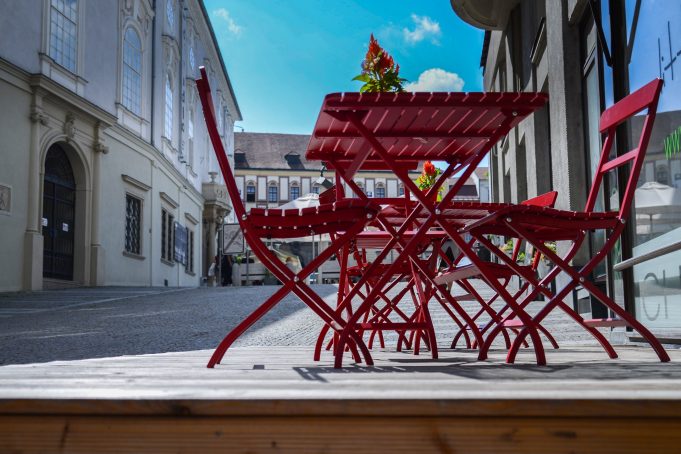Opening a bistro is often the fulfilment of a lifelong dream. Owning a business, cooking delicious food for people and creating a space that encourages people to come together are all great ambitions. When this dream becomes a reality, one of the most important aspects of making it a success is getting the ambience right, and a large part of that comes down to the furniture you choose.
Furniture At Work offers a wide range of bistro furniture for all occasions and settings. When selecting bistro furniture, there are various considerations that must be accounted for to ensure the final set-up facilitates creating the desired atmosphere.
Concept
All restaurants begin with a concept and this idea underpins every other aspect of the planning process, including choice of furniture. Part of this involves considering the type of clientele you want to attract. Venues looking to bring in large parties will want a vastly different set-up to those looking to draw in romantic couples and people seeking a more intimate dinner experience.
Some bistros are casual and rustic; others are more formal and glamorous. Some are designed to encourage people to settle in for the evening, while others have a more fast-food vibe and want to hustle people in and out quickly. Choosing furniture that ties in with the concept can help set the tone from opening day.
Practicality
Style is a huge part of choosing furniture to create an interior or outdoor dining area that attracts the customers you want. However, there are also practical considerations that can be equally as important.
Outdoor dining furniture needs to be weather-resistant and easy to clean. Smaller spaces may benefit from folding or stackable furniture, as can outdoor areas that are only going to be open for part of the year. In any restaurant, having at least some portable furniture can help the venue accommodate unexpected requests such as accepting larger parties on an otherwise quiet evening.
There are typically more practical criteria for choosing outdoor furniture than for indoors, so if you want both and you want them to coordinate, you should probably choose the outdoor items first.
Floor Plan
A good restaurant floor plan considers how foot traffic will move around the venue and avoids creating areas where crowding could easily occur. Having a range of seating options can help draw in a larger audience: secluded booths for privacy, comfy low seating for coffees, high bar tables and stools for mingling, and so on.
Flexibility is key, so when creating a floor plan, it is important to look at how things could also be moved around if required.
Maintenance
No restaurant owner wants to have to replace furniture on a regular basis or spend hours each week deep-cleaning. Maintenance is therefore an important consideration when selecting bistro furniture.
Tables should be designed from materials that can be quickly and easily sanitised during busy service times and all furniture needs to be able to withstand heavy use without obvious signs of wear and tear.
Choosing durable materials from the start can save a lot of money in the long-term. In settings where materials that require more care and attention are the most appropriate, such as real wood, staff should be properly trained in how to care for the furniture appropriately.










